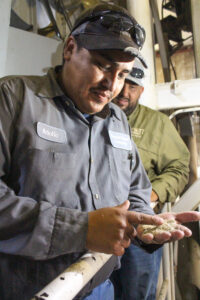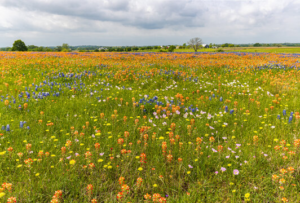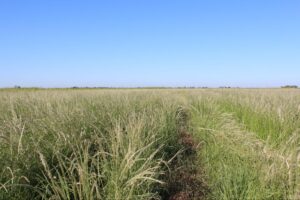Part 3: Reclamation Seed Tips & Tricks
Reclamation jobs in the construction industry pose an interesting dilemma because a project won’t wait for optimal conditions. Ag producers plan their planting based on the season or by an agency overseeing the project, while reclamation professionals in construction are tasked with growing plants on disturbed soil from reclamation seed regardless of the time of year. Failure is not an option as contractors are not paid in full until a high percentage of vegetative cover is established on site. It is a tricky proposition because planting at the “appropriate time” or before the likely chance of a precipitation event is not an option with laborers and equipment needing to head to a new job. Let’s look at management practices to increase the likelihood of a project’s success, regardless of the time of year.
Cover Crops
Cover crops are helpful when establishing native plants because they provide almost immediate, but temporary, soil stabilization into which the conservation seed can be planted. After cover crops are planted, they are allowed to reach a certain height, then terminated so that the standing dead litter cover is left to plant into. Plants used as cover crops are typically warm season annuals like millet and sorghum, or cool season annuals like wheat and rye. There is added time that it can take to get cover crops established and the added cost of a separate planting, so cover crops are not used as often in construction projects.
Nurse Crops
Nurse crops are the same types of plants that are used as cover crops but they are planted with the reclamation seed, thereby removing a step from the process. An advantage to not having the luxury of waiting for the best conditions is you don’t have to play by the rules. Nurse crops are usually planted at a fraction of the rate that they would be in production agriculture because you only want a plant population that will shade the ground and slow erosion without creating too much competition for the native plants that you are trying to establish with your reclamation seed. Warm season crops such as sorghum and millet, which are typically planted in the spring, can be used in the late summer/early fall to help nurse perennial native plants up. Conversely, cool season annuals such as wheat and rye that are usually planted in the fall, can be used in the late spring /early summer. Because of the versatility of these annual nurse crops, it is often a great idea to include both types in a conservation seed blend. That way, regardless of the planting time, changes, or delays, an approved blend can be used without having to make any changes that need to be approved by an engineer, thus saving valuable time.
Soil Amendments
Soil testing can potentially impact the success of a project because it will:
- Reveal if the soil requires amendments that will encourage germination and support plant life
- Give you peace of mind in knowing that you didn’t plant good reclamation seed into less than ideal soil conditions
If soil amendments are needed, there is no way to know how much is needed without testing. Phosphorous and Potassium are probably the two minerals that should be considered the most when trying to establish native grasses. In most cases, Nitrogen does not need to be added for establishment of natives, and we usually recommend against using any Nitrogen fertilizer because it will only encourage weed competition.
Pest Management
When trying to establish native vegetation, any herbivore is a pest. Domesticated ones such as sheep and cattle are easy enough to manage, but wildlife and insects pose more of a problem. When grass is little and tender, it is very palatable and therefore targeted by grazers. If that plant is so young that it doesn’t have a strong root structure yet, the grazers will tend to pull it up, root and all, and you’re back at square one. Similarly, you should be aware of the threat of certain insects. In west Texas, grasshoppers can be a plague in the spring/summer and Army Worms can completely destroy young plants in the late summer/early fall.
When it comes to the success of your reclamation seed plantings, this revegetation series is only a general overview of some things to keep in mind. You should always assume that some of these items will change from one location to the next. If you are starting a construction job in a new location it’s a good idea to speak to someone that has experience with reclamation in that area like a farmer, rancher, or a guy that works for the conservation seed company.



